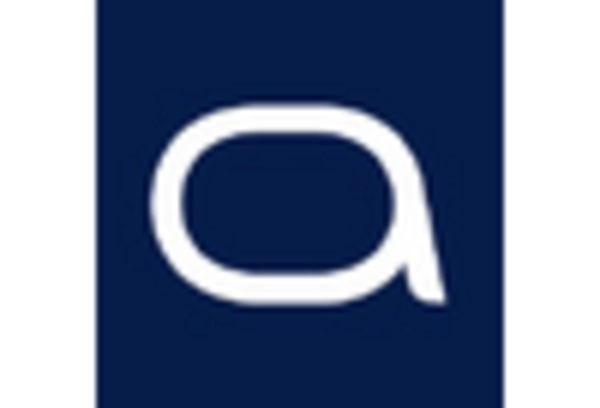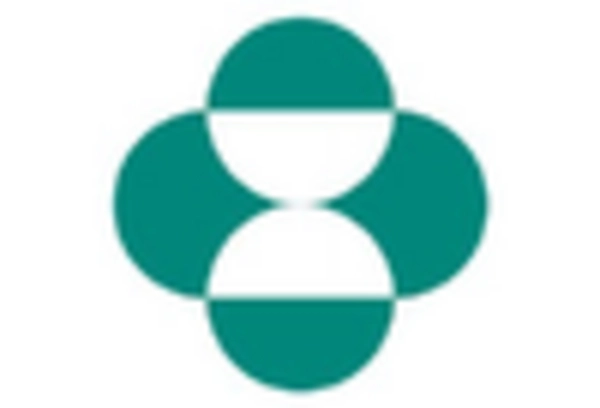Rising Demand for Personalized Medicine
The rising demand for personalized medicine is shaping the Dermatitis Herpetiformis Treatment Market. Patients increasingly seek tailored treatment approaches that consider their unique genetic and environmental factors. This trend is prompting healthcare providers to adopt more individualized treatment plans, which may include specific dietary recommendations and targeted therapies. As the understanding of the genetic basis of dermatitis herpetiformis improves, the potential for personalized treatment strategies becomes more feasible. Market data suggests that the shift towards personalized medicine could lead to enhanced patient satisfaction and improved treatment adherence. Consequently, the Dermatitis Herpetiformis Treatment Market may witness a transformation as stakeholders prioritize personalized approaches to care.
Increase in Prevalence of Celiac Disease
The rising prevalence of celiac disease is a notable driver for the Dermatitis Herpetiformis Treatment Market. As celiac disease is closely associated with dermatitis herpetiformis, the increasing number of diagnosed cases contributes to a heightened demand for effective treatment options. Recent estimates suggest that approximately 1 in 100 individuals are affected by celiac disease, which may lead to a corresponding rise in dermatitis herpetiformis cases. This growing patient population necessitates the development and availability of specialized treatments, thereby propelling the Dermatitis Herpetiformis Treatment Market forward. Furthermore, as awareness of celiac disease increases, more individuals are likely to seek medical advice, leading to earlier diagnosis and treatment of dermatitis herpetiformis, which could further stimulate market growth.
Innovations in Pharmaceutical Treatments
Innovations in pharmaceutical treatments are significantly influencing the Dermatitis Herpetiformis Treatment Market. The introduction of new medications, including topical treatments and systemic therapies, has expanded the therapeutic options available for patients. Recent advancements in drug formulations and delivery systems have improved efficacy and patient compliance. For instance, the development of gluten-free medications and adjunct therapies that target the underlying immune response may enhance treatment outcomes. Market data indicates that the pharmaceutical segment is expected to witness substantial growth, driven by these innovations. As healthcare providers increasingly adopt these novel therapies, the Dermatitis Herpetiformis Treatment Market is likely to experience a surge in demand, reflecting the need for effective management of this chronic condition.
Growing Investment in Research and Development
Growing investment in research and development (R&D) is a critical driver for the Dermatitis Herpetiformis Treatment Market. Pharmaceutical companies and research institutions are increasingly allocating resources to explore new treatment modalities and improve existing therapies. This focus on R&D is essential for understanding the pathophysiology of dermatitis herpetiformis and developing targeted therapies. Recent funding trends indicate a rise in clinical trials aimed at evaluating the safety and efficacy of novel treatments. As more innovative solutions emerge from these research efforts, the Dermatitis Herpetiformis Treatment Market is poised for expansion. The potential for breakthrough therapies may not only enhance patient outcomes but also attract further investment, creating a positive feedback loop that supports market growth.
Increased Focus on Patient Education and Support
Increased focus on patient education and support is emerging as a vital driver for the Dermatitis Herpetiformis Treatment Market. Healthcare providers are recognizing the importance of educating patients about their condition, treatment options, and lifestyle modifications. Enhanced patient support programs, including counseling and dietary guidance, are being implemented to improve treatment adherence and overall quality of life. This emphasis on education is likely to empower patients, enabling them to make informed decisions regarding their treatment. As awareness of dermatitis herpetiformis grows, the demand for comprehensive support services is expected to rise. This trend may lead to a more engaged patient population, ultimately benefiting the Dermatitis Herpetiformis Treatment Market by fostering better health outcomes.

















Leave a Comment